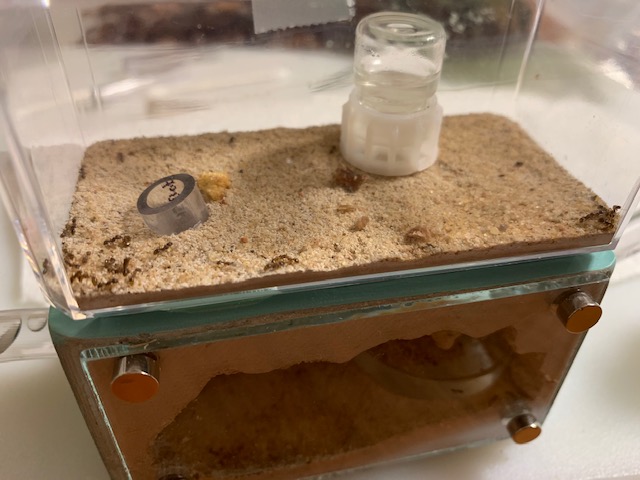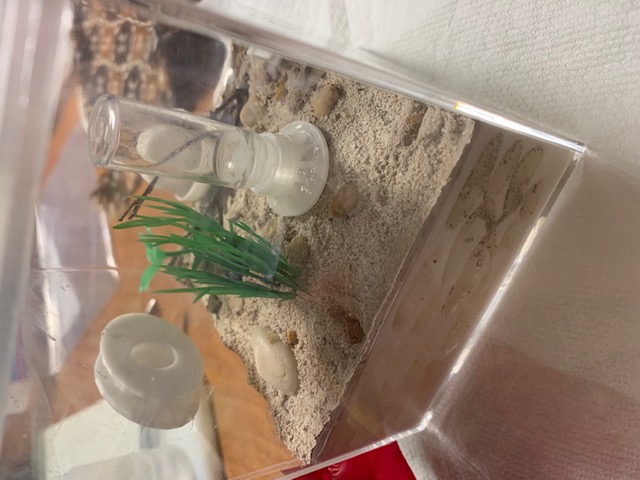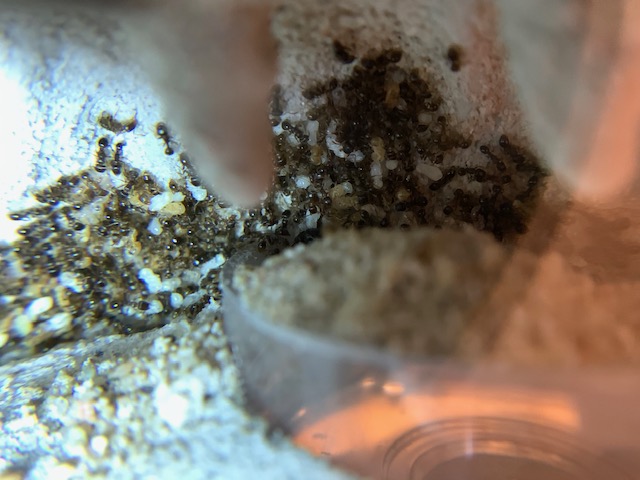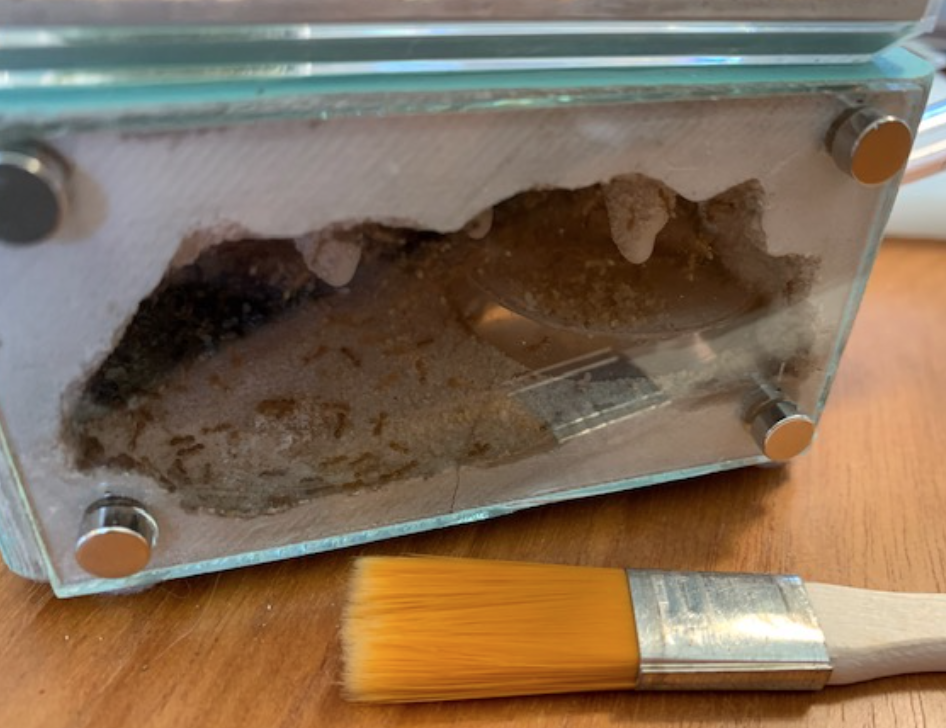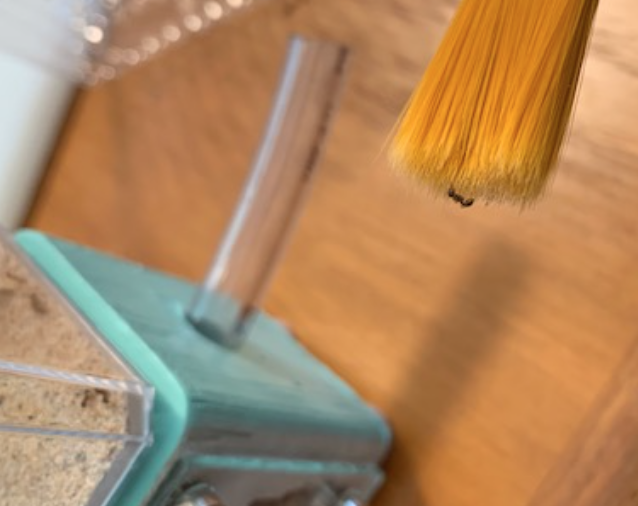This isn't going to be a full journal, but I've noticed some quirks with these guys and since they are so common, I thought I'd note some of them. UPDATE: I guess it will be more of a full journal.
I initially got Tetramorium because:
- They are super easy for beginners and I was coming back to the hobby after a hiatus of 30 years
- They are pretty harmless
- They don't need a diapause/brumination/hibernation
MORE NOTES:
- Tetramorium are small and slip through small cracks and gaps easily
- Tetramorium are small enough hundreds will fit in a mini-hearth or test tube
- Tetramorium are pretty "smart" ants - they aren't really picky about food and they are good at caring for and rescuing their brood
- Tetramorium aren't fond of light and like to use loose sand to block off windows
FOODS
Some stuff my Tetramorium colonies have readily eaten (they are the least picky of my ants):
- cut up mealworms
- live fruit flies - Tetras are excellent fruit fly hunters
- cut up (normal/large) flies
- cut up fly larvae and fly pupae
- dry bloodworms
- fish flakes
- shrimp, lamb (but not sure how much of it they manage to consume; they are so small they have trouble ripping it up)
2019.8.25
T1: I bought my first Tetramorium colony, a test tube with less than 10 workers if I recall right. I was disappointed by how small they were. The queens I used to collect in the US Midwest had big rounded gasters and beautiful brown banding, and their nanitics were large enough to see well. The T1 queen is small and black and the nanitics tiny and brown and harder to see. I had been naively noobishly hoping they were the same as the common ants in the Midwest I used to keep, but obviously they were not.
2019.9.15
T2: 2nd colony acquired NOT because I wanted it, but it was represented as a different genus/species and I only figured it out after I got home and compared them carefully and sent out some photographs to a couple people.
Pics of T2:
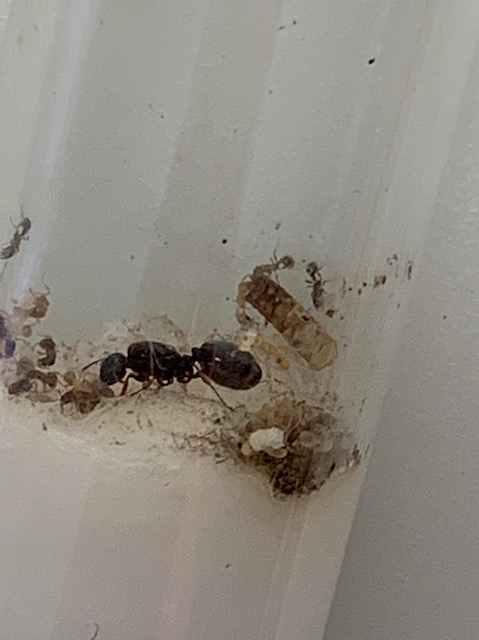
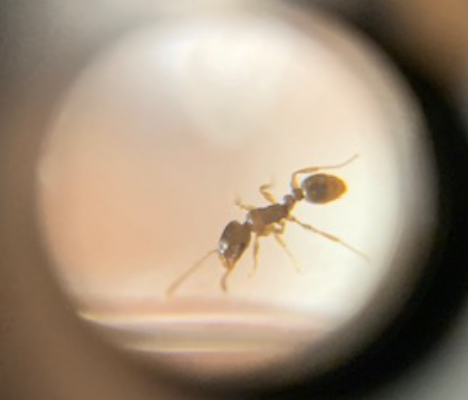
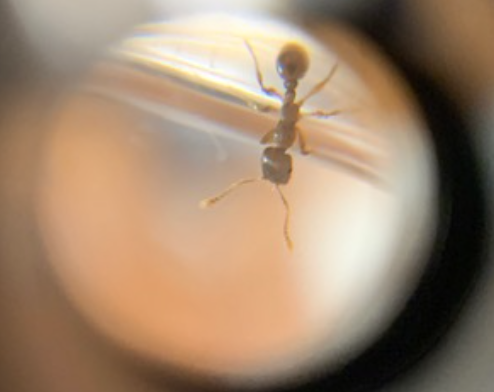
Edited by OhNoNotAgain, August 11 2024 - 10:14 PM.



